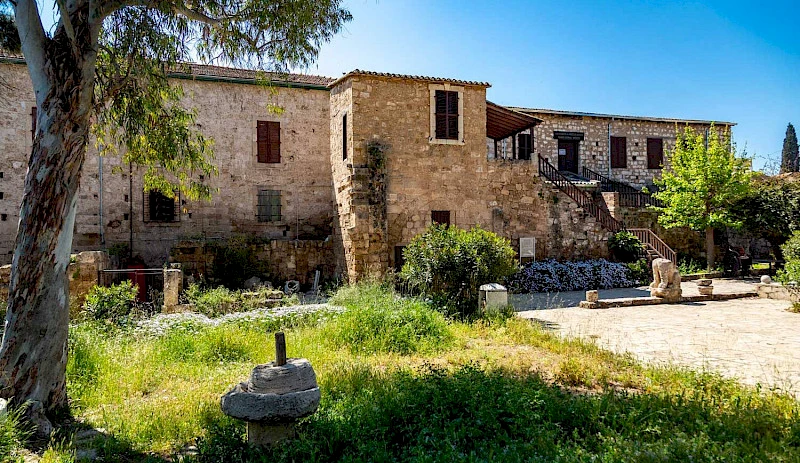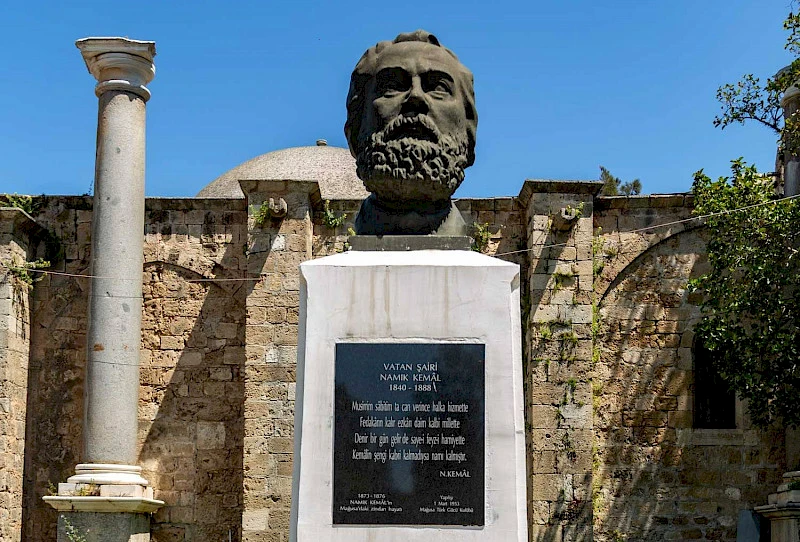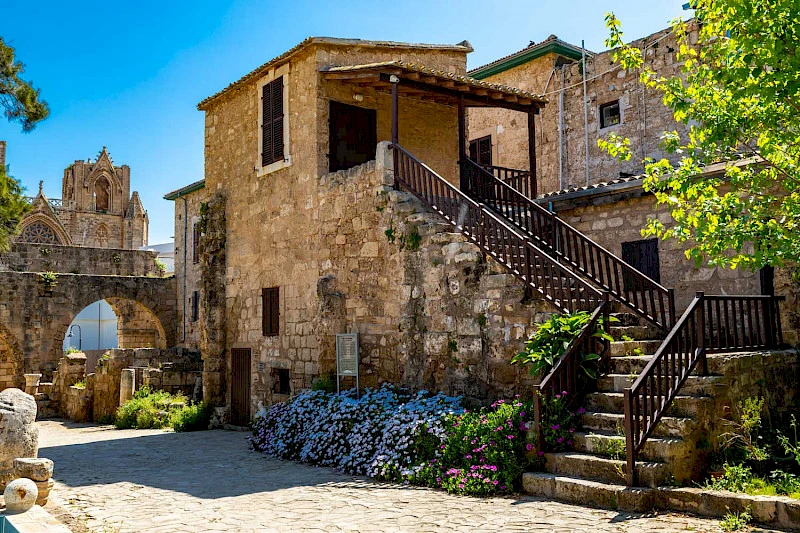The Dungeon of the “Turkish Shakespeare” in Famagusta
This historic building in Famagusta is known for temporarily housing the influential Turkish writer Namık Kemal.
Known as the “Shakespeare of Turkish literature,” Kemal spent 38 months of his life in this building, from 1873 to 1876.

Who Was Namık Kemal
Namık Kemal was an Ottoman writer, poet, democrat, intellectual, reformer, journalist, playwright, and political figure who influenced the formation of the “Young Ottomans” and their struggle for governmental reforms in the Ottoman Empire during the late Tanzimat period.
Kemal was especially known for advocating the concepts of freedom and homeland in his numerous plays and poems, and his works had a significant impact on the emergence of future reformist movements in Turkey and other former Ottoman territories. He is often regarded as someone who played a vital role in reinterpreting Western ideas such as natural rights and constitutional government.
For promoting nationalism and liberalism, the writer was exiled to Cyprus by Sultan Abdulaziz on April 9, 1873. When Abdulaziz was overthrown, Namık Kemal was pardoned by Murad V and returned to Constantinople on June 29, 1876. In the Famagusta dungeon, Namık Kemal wrote his plays “Gülnihal” and “Akif Bey.”
A bronze bust of Namık Kemal stands in the square named after him, opposite the dungeon. As the founder of the Turkish Republic, Mustafa Kemal Atatürk cited Namık Kemal’s works as a major source of inspiration, the writer continues to be regarded as a literary hero by many in both Turkey and Northern Cyprus.
Stay in Famagusta
Seen as a potential revolutionary and threat, Kemal was exiled by Sultan Abdulaziz on April 9, 1873, shortly after the first performance of his play “Homeland or Silistra” — a drama dedicated to the Siege of Silistra — at the Gedik Pasha Theater in Istanbul. The Ottoman government considered the play dangerous as it promoted nationalism and liberalism.
When Namık Kemal arrived in Famagusta, he initially lived on the ground floor. According to discovered records, his original cell was described as too dark and uninhabitable — the room was indeed just over ten square meters and lacked furniture.
After some time, he was moved to the upper floor with the governor of Cyprus’s permission. A steep stone staircase on the side of the building leads to this floor, which features two large windows, a landing at the front, and a marble floor.
- Notable Point: Kemal wrote extensively about Famagusta, often expressing strong negativity toward the city.

House-Museum Building
The building to which Kemal was exiled was originally part of the Venetian Palazzo del Provveditore. However, the prison structure in its current form was built during the Ottoman period in one of the corners of the ruined palace.
The building has two floors: the lower floor displays pre-Ottoman Lusignan-era architecture, while the upper floor is built in a distinct Ottoman style.
The first floor, with a single vaulted cell, is rectangular in shape, has a low arched entrance door, and a barred window overlooking the courtyard of the Venetian Palace. Although referred to as a dungeon, it is not subterranean.
A steep stone staircase on the side of the building leads to the upper floor, which has two large windows, a front landing, and a marble floor.
The restoration of the dungeon in the 1990s made it possible to use the building as a museum, which now houses many items and documents related to the late distinguished writer.
At the beginning of 1993, the Department of Antiquities of Northern Cyprus initiated restoration work on the dungeon and preparations for its use as a museum. Six months later, the work was completed, and the dungeon was opened as a museum. On May 9, 2023, the building was reopened after further restoration.
- Interesting Fact: According to some sources, this same dungeon was used by British authorities during World War I.

Frequently Asked Questions about Namik Kemal's Dungeon
Is there parking at the building?
You won't be able to park directly at the museum, as it faces the square and mosque, and is generally located within a pedestrian zone. However, you can leave your car between Othello Castle and the Desdemona Park, right here: 35.12674553700094, 33.94362582655385.
How to get to Namik Kemal Museum?
The museum is located in the center of Famagusta, in the old town behind the city walls, and buses do not go directly to it. The nearest public transport stop is at the roundabout near the Anit Park, here is the spot. The location of the actual landmark is at the bottom of the text.
What to see nearby the museum?
Right nearby, across the main square of Famagusta, named after Namik Kemal, is the main mosque of the city — Lala Mustafa Pasha. And next to it, the remarkable and ancient oldest fig tree in Cyprus.
Follow our Instagram and Telegram channel to discover the most interesting things about Northern Cyprus' landmarks!

